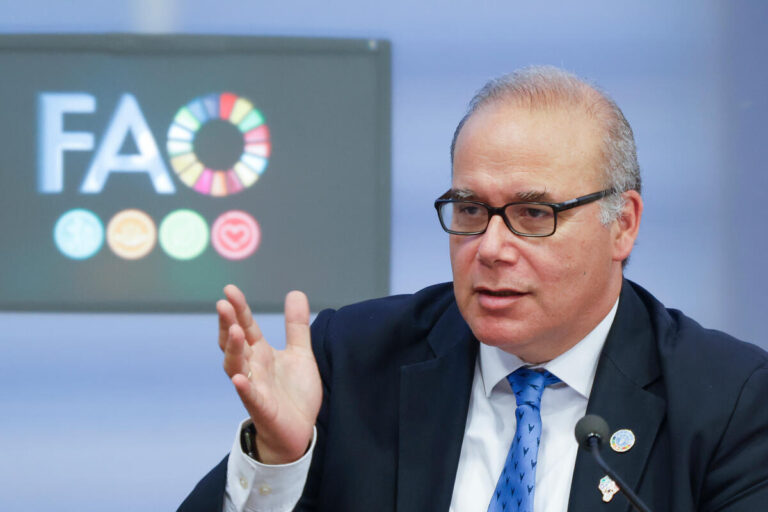More than 25% of children under 5 years are suffering severe hunger, says Unicef report
Amy Borrett in Financial Times | 06/06/2024
Increased conflict and extreme weather events caused by climate change are intensifying food crises, with more than one in four children facing severe hunger, according to a Unicef report.
Globally, 27 per cent of children under 5 years of age suffered severe food poverty in 2022, the UN’s child development agency said on Thursday in its biggest ever study of the issue.
More than a third of the 181mn affected children live in south Asia where two in five infants fall below the food poverty line — defined by Unicef as daily consumption of only two of the eight food groups — with countries such as Afghanistan and India particularly hard hit.
Two in five children in south Asia live in severe food poverty
The problem has been exacerbated by a rise in “conflict, climate shocks and economic crises”, making it more difficult for families to find and afford nutritious food for their young children, according to Harriet Torlesse, lead author of the report and nutrition specialist at Unicef.
The agency said action was also needed to combat rising food prices, a prevalence of unhealthy foods, harmful food marketing strategies and poor child feeding practices.
“We expect those trends to continue if nothing is done,” she added. “Child food poverty needs to be elevated as a development and humanitarian priority.”
Wars are the primary cause of food poverty, according to a recent report by the Food Security Information Network, a global initiative. Almost 135mn people across 20 countries faced acute food insecurity in 2023 as a result of conflict, a rise of 82 per cent from the 74mn people affected in 2018.
In Gaza, Israel’s war against Hamas has contributed to a big increase in child hunger. It estimated that 88 per cent of children are now living in severe food poverty, one of the highest rates ever recorded in the Palestinian territory, up from 13 per cent in 2020.
Conflict is the main global driver of acute food insecurity
While the report found the proportion of children living in severe food poverty had barely shifted in half of the 64 countries with data going back to 2012, almost a fifth of the countries surveyed a decade ago have seen their situation deteriorate.
Increased community education and stronger social safety nets were vital to prevent the UN falling short of its sustainable development goal of ending malnutrition by 2030, said Torlesse.
“Unless we act now to improve consumption of nutritious diets in early childhood it is highly unlikely we will make enough progress towards the targets,” she added.
Some of the highest food poverty rates were in sub-Saharan Africa, where rates of stunting, a severe form of malnutrition, in some western and central countries on the continent are forecast to remain more than twice the agreed target in 2030.
Food insecurity in these regions has been heightened by rise in droughts and floods caused by climate change, with large swaths of arable land being wiped out.
Progress is not occurring fast enough to meet UN development targets
Child food poverty had long-term consequences, said Marta Favara, director of research at the Young Lives study of poverty and inequality at Oxford university.
“When mothers are exposed to shocks while pregnant it affects newborn health and has a persistent impact on children’s development,” she said.
“Malnutrition in infancy has a long-term impact on their physical growth but also on their cognitive development with knock-on effects on their schooling and employment outcomes.”
Rapid progress is possible. Unicef said Burkina Faso halved the prevalence of child food poverty over the past decade through targeted investment in agriculture, social safety nets and education on child nutrition.
Almost two-thirds of children in Somalia live in severe food poverty
Citizens in poorer regions were increasingly relying on cheaper ultra-processed food and drinks, Unicef said.
Data from the Global Nutrition Report showed consumption of processed food doubled between 2010 and 2022 in lower-middle income countries, Purchases of soft drinks also rose 70 per cent over the period.
Favara said this has created a “double burden” of malnutrition, as countries face a rise in obesity alongside undernourishment.
While the problems caused by processed foods mostly affects urban regions, acute food insecurity was more prevalent in rural communities.
Consumption of unhealthy food and drinks is rising in poorer countries
Sabina Alkire, director of the Oxford Poverty and Human Development Initiative, called for an increased focus on tackling rural poverty at a time when extreme weather events are destroying agricultural livelihoods.
“It’s important to find the most powerful policies that address multiple deprivations,” she said.
Alkire said some of the regions worst hit by conflicts and climate shocks had seen an “erosion” in humanitarian support.
“The number and severity of conflicts is increasing,” she added. “[But] there are forgotten wars and forgotten droughts, where people are in desperate need of interventions, assistance and solidarity even if the public are less aware of them.”
First published in the Financial Times
https://www.ft.com/content/ef0107a1-626e-438a-a6dd-cdbda6e4fb32



